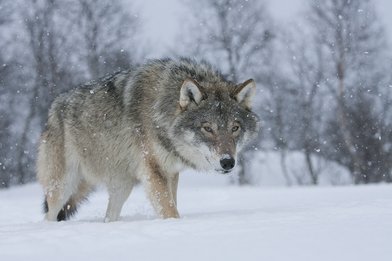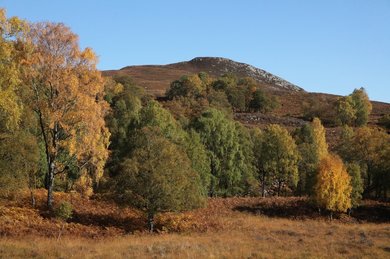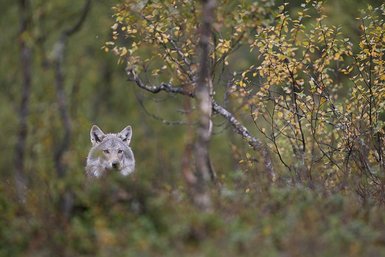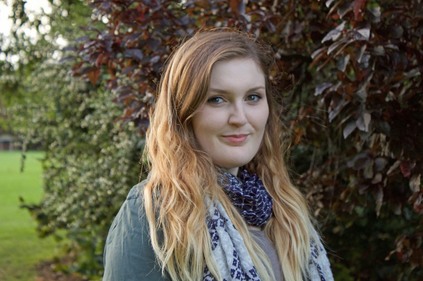|
16/4/2017 1 Comment A Wolf in Human’s Clothing
 Image by Peter Cairns Image by Peter Cairns When I read the phrase “human wolf pack” I did a double take. I had to read the whole article again. Had I understood correctly? A charity about protecting trees was about to send a group of people out into the Scottish Highlands to act like wolves? I had to know more. Project Wolf is a study run by Trees for Life, which aims to better understand the impact large predators like wolves would have on the deer population in Scotland. The “wolves” spend a month at the charity’s Dundreggan Conservation Estate in the Highlands, roaming the area at dusk and dawn in order to create a “landscape of disturbance” for the deer population. By moving the deer on, the charity hopes to stem overgrazing and to restore the native forest.  Image by Trees for Life Image by Trees for Life For me, this seemed to be the perfect opportunity to make a film on rewilding. The study brings many of the themes of rewilding I am eager to discuss together. And so I approached Alan Watson Featherstone about the idea of making the film Project Wolf. As they are without any significant predators, Scotland’s population of sika (a non-native species) and red deer requires management, taking the form of regular culls. So while Trees for Life is predominantly focused on rewilding to restore and protect the Caledonian Forest, its efforts are hindered by deer that feast uninterrupted on new seedlings. Although measures like fencing are in place, if large predators were reintroduced to the landscape the deer’s behaviour would be altered and their numbers controlled by natural processes. It would provide solutions to multiple problems - but not without the potential to create others. Many reading this blog will already be aware of the trophic cascade theory, demonstrated in Yellowstone National Park by the reintroduction of wolves. This caused a domino effect on the whole ecosystem of the park to the extent that the formation of the rivers changed. So there is no doubt that wolves, as well as other animal species, have the potential to hugely impact rewilding efforts in Scotland. It is not, however, quite as simple as it first appears. Wolves may be able to alter whole landscapes - but humans already have. Despite the fact that wolves were once native and will contribute to restoring Scotland’s natural landscape, we also need to consider how they would adapt to the environment as it is now, after generations of change. Furthermore, there are many in Scotland who benefit from the landscape in its current state, and many people will be concerned for their livelihoods in either shooting sports or farming. The concerns of these influential voices in Scotland need to be considered. There is also the cultural acceptance of wolves to consider. While the lynx has relatively few negative perceptions, the wolf has been particularly demonised. Fairytales tell us to beware of the big bad wolf from a young age - so it is not surprising that many worry over sharing a walk in the woods with one.  Image by Peter Cairns Image by Peter Cairns The reality is that wolf attacks on humans are very rare in regions where they already coexist, and that we are unlikely to come into common contact with them in the areas where they will thrive. This does not change the fact, though, that humans in the UK have not faced this concern in living memory, and YouTube videos of parents walking their children to school with axes are likely more striking than positive statistics to the vast majority. Yet it also causes public outrage here when areas where such videos are filmed want to cull their wolf population. My last film, Red Sky on the Black Isle, focused on the plight of the red kite in Northern Scotland - a harmless creature to humans, game and livestock alike. The persecution of hen harriers - and even tourist-attracting eagles - is well documented. I have no desire to return wolves just to have them face the same fate. Which brings me to the human element of Project wolf. Like most conservation issues, rewilding comes down to people. While many of us associate wolves with the villain in Red Riding Hood, myths and legends of humans transforming into wolves are common around the world, often with positive connotations. The wolf pack in Dundreggan will spend a month walking the woods in the footsteps of wolves. They will be afforded time to get closer to nature; an opportunity that most people either can't or don't make enough time for in their lives. In a time where healthcare practitioners are urging us to spend more time outdoors for both physical and mental health, and movements such as ‘forest bathing’ are coming into vogue, this also seems significant. It will be interesting to hear their insights into the experience. If our society could rewild itself in this way, remind ourselves of the irreplaceable value of nature, maybe it would come a little higher on our list of priorities. I would love to see wolves return to Scotland within my lifetime, for a lot of reasons, but only if we are ready to accept them. So how do we get there? By starting to speak about it now, by educating people, and by gathering research - just as Trees for Life are doing. Wolves and other large predators are often seen as the pinnacle of rewilding efforts, not because they are the end goal but because they give greater scope to create functional ecosystems that allow us to step back and let nature manage itself. So for me, Project Wolf is the perfect opportunity to talk about not only rewilding in terms of reintroducing animal species and of restoring landscapes - but also rewilding ourselves. AuthorHead to Indiegogo for more information about Project Wolf, and to donate to the crowdfunding campaign. Like Project Wolf on Facebook and follow Lisa Marley on Twitter to keep up to date with the latest developments on the film.
1 Comment
Leave a Reply. |
Alan Hepburn 2024 |
Twitter - twitter.com/RewildScotland
|


 RSS Feed
RSS Feed